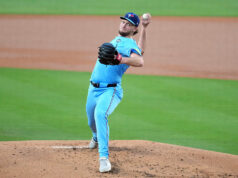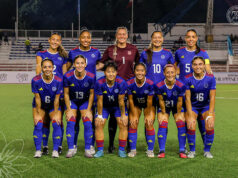As expected, the National Basketball Association is pushing ahead with its plan to restart the 2019–20 campaign despite all the uncertainty caused by the novel coronavirus pandemic. With its future literally at stake, the league felt it had no choice but to exhaust any and all measures possible in reclaiming a significant part of the season it was compelled to indefinitely suspend last March 11. And, notably, safety remains at the forefront of its efforts; the measures it has instituted have been lauded by no less than Dr. Anthony Fauci, director of the National Institute of Allergy and Infectious Diseases and an influential member of the White House Coronavirus Task Force.
To be sure, the NBA has been careful to involve all stakeholders in preparations for the resumption of play. And, certainly, the active participation of the players association in crafting protocols governing movement within the bubble environment at the ESPN Wide World of Sports Complex in Walt Disney World Florida has helped it move forward with controlled opposition. Even with all the painstaking care with which it made sure to act in aiming for a consensus, it still had to deal with pockets of resistance. Imagine if it simply went full speed ahead and assumed that it knew best, period. In the face of eminently valid health and social justice concerns, it would have been exposed as callous as best and greedy at worst.
Admittedly, the NBA is bent on salvaging the final and most important segment of the campaign for financial reasons. Had it gone for a full cancelation, it would have had to write off 10-figure losses and likewise put a huge question mark on the immediate term. Amid the crunch felt by even the better-paid players, franchise owners would no doubt have insisted on a renegotiation of collective bargaining terms and held hostage the next season until the forging of a new accord. Meanwhile, the well-earned reputation of the league as one of and for fans — unlike, say, Major League Baseball — would have taken a considerable hit.
There can be no overestimating the risks involved, the NBA’s preparedness notwithstanding. The threat is real, and not just because there remains plenty to be known about the virus. With a vaccine still a ways away and infection despite the closed-doors setup inevitable, relative success will be measured not in terms of eliminating setbacks, but, rather, in how the setbacks were anticipated and responded to with resolve. As commissioner Adam Silver acknowledged in a conference call with league officials over the weekend, “we know that COVID-19 will be with us for the foreseeable future. And we are left with no choice but to learn to live with this virus.”
Indeed, the NBA is keen on coping with the pandemic by establishing a new normal under its terms. First, it needs to show that it can adapt; restarting the season on July 30 is the first in a series of steps designed to crown a champion when the battlesmoke clears. If it is able to tread the dangerous landscape and prune down 30 to 22 to 16 to eight to four to two to one with few incidents of note, then it will have been able to prep for the work that comes next. Having already survived, it would want to prove that it can thrive.
Anthony L. Cuaycong has been writing Courtside since BusinessWorld introduced a Sports section in 1994. He is a consultant on strategic planning, operations and Human Resources management, corporate communications, and business development.



